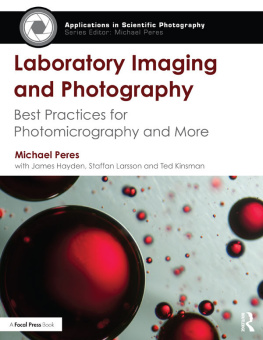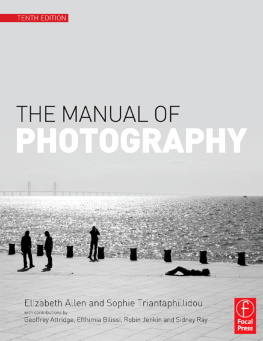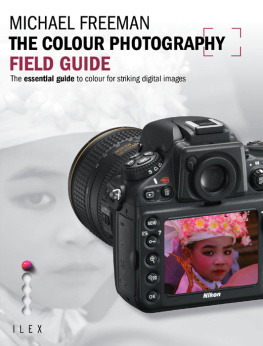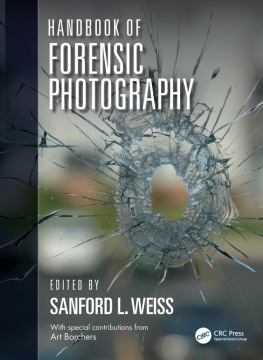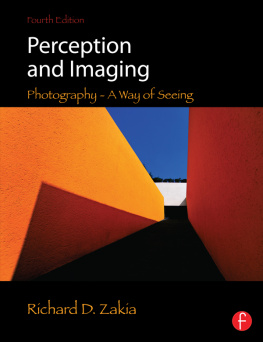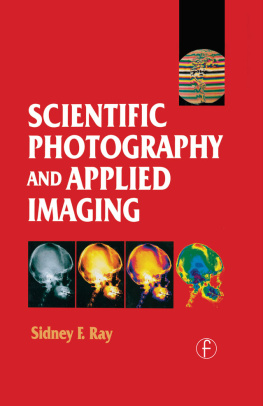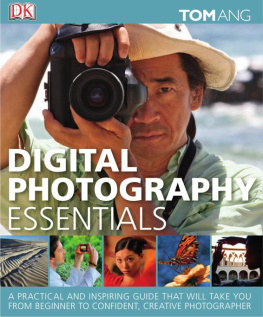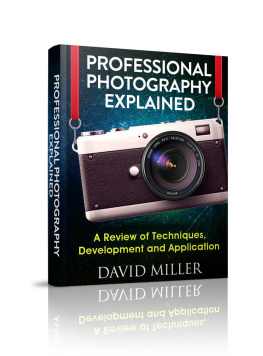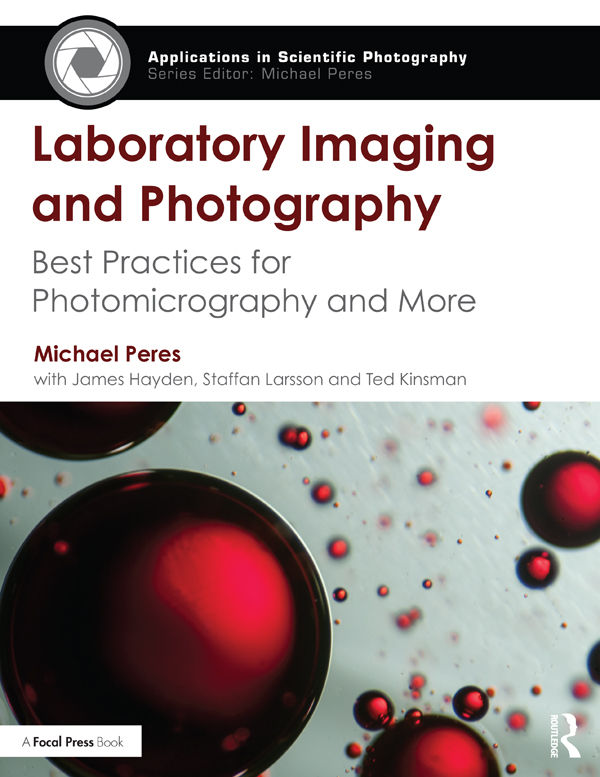
LABORATORY
IMAGING AND
PHOTOGRAPHY
L aboratory Imaging and Photography: Best Practices for Photomicrography and More is the definitive guide to the production of scientific images. Inside, the reader will find an overview of the theory and practice of laboratory photography along with useful approaches to choosing equipment, handling samples, and working with microscopic subjects. Drawing from over 150 years of combined experience in the field, the authors outline methods of properly capturing, processing, and archiving the images that are essential to scientific research. Also included are chapters on applied close-up photography, artificial light photography and the optics used in todays laboratory environment, with detailed entries on light, confocal, and scanning electron microscopy. A lab manual for the digital era, this peerless reference book explains how to record visual data accurately in an industry where a photograph can serve to establish a scientific fact.
Key features include:
Over 200 full-color photographs and illustrations
A condensed history of scientific photography
Tips on using the Adobe Creative Suite for scientific applications
A cheat sheet of best practices
Methods used in computational photography.
Michael R. Peres is the editor-in-chief of The Focal Encyclopedia of Photography, fourth edition, and former chair of the biomedical photographic communications department at the Rochester Institute of Technology. Since 1986, he has taught photomicrography, biomedical photography, and other applications of photography used in science. Prior to joining the RIT faculty, Peres worked at Henry Ford Hospital and the Charleston Division of West Virginia University as a medical photographer. He is the recipient of the RIT Eisenhart Outstanding Teaching Award and the Schmidt Medal for Lifetime Achievement in the Field of Biocommunications.
LABORATORY
IMAGING AND
PHOTOGRAPHY
Best Practices for Photomicrography and More
Michael R. Peres
with contributions by
James Hayden, Staffan Larsson, and Ted Kinsman

First published 2017
by Routledge
711 Third Avenue, New York, NY 10017
and by Routledge
2 Park Square, Milton Park, Abingdon, Oxon 0X14 4RN
Routledge is an imprint of the Taylor & Francis Group, an informa business
2017 Taylor & Francis
The right of the editor to be identified as the author of the editorial material, and of the authors for their individual chapters, has been asserted in accordance with sections 77and 78 of the Copyright, Designs and Patents Act 1988.
All rights reserved. No part of this book may be reprinted or reproduced or utilised in any form or by any electronic, mechanical, or other means, now known or hereafter invented, including photocopying and recording, or in any information storage or retrieval system, without permission in writing from the publishers.
Trademark notice: Product or corporate names may be trademarks or registered trademarks, and are used only for identification and explanation without intent to infringe.
Library of Congress Cataloging in Publication Data
Names: Peres, Michael R., author.
Title: Laboratory Imaging and Photography : best practices for
photomicrography and more / Michael R Peres with contributions by
James Hayden, Staffan Larsson, and Ted Kinsman.
Description: New York : Routledge, [2016] | Includes bibliographical
references and index.
Identifiers: LCCN2016002689 (print) | LCCN 2016006508 (ebook)
ISBN9781138819221 (hardback) | ISBN 9781138819238 (pbk.)
ISBN9781315744735 | ISBN 9781315744735 ()
Subjects: LCSH: Photography-Scientific applications. | Photomicrography.
Classification: LCCTR692 .P46 2016 (print) | LCCTR692 (ebook) | DDC
778.3/l-dc23
LC record available at http://lccn.loc.gov/2016002689
ISBN: 978-1-138-81922-1
ISBN: 978-1-138-81923-8
ISBN: 978-1-315-74473-5
Typeset by Alex Lazarou
Contents
Part I
Foundations, Fundamentals, Principles, and Theory
Part II
Applications, Best Practices, and Methods
JAMES HAYDEN
TED KINSMAN
JAMES HAYDEN
STAFFAN LARSSON
MICHAEL R. PERES joined the teaching faculty of Rochester Institute of Technologys School of Photographic Arts and Sciences in 1986. He is a professor of biomedical photographic communications and teaches photomicrography biomedical photography and other related applications of photography used in science. He served as the chair of the biomedical photographic communications department for more than twenty years. Prior to joining the RIT faculty Peres worked at Henry Ford Hospital and the Charleston Division of West Virginia University as a medical photographer.
Peres has enjoyed a varied photographic career that began in 1973. He is an educator, author, artist, and innovator. He has led workshops worldwide and has been publishing most of his career. In 2007, he served as the editor-in-chief of The Focal Encyclopedia of Photography, fourth edition. Some of his professional activities include co-coordinating the RIT Images from Science project and the RIT Big Shot project, and chairing the Lennart Nilsson Award nominations committee (19982011).
Peres has received numerous awards including RITs Eisenhart outstanding teaching award and the Schmidt medal from the BioCommunications Association for lifetime achievement in the field of biocommunications. He holds a masters degree in instructional technology and bachelors degrees in biology and biomedical photographic communications. He is also a registered biological photographer.
JAMES HAYDEN is managing director of The Imaging Core Facility at The Wistar Institute in Philadelphia, Pennsylvania. Hayden earned a BA in biology and biophotography and was employed by the University of Pennsylvania School of Veterinary Medicine in 1983. He also ran a freelance photography business called Bio-Graphics. He was hired by The Wistar Institute in 2002. Although specializing in photomicrography he also photographs everything from cells to people. Haydens responsibilities include customized imaging, consultation on experimental design, advanced imaging training, and quantitative image analysis. Hayden has lectured extensively and led workshops in both domestic and international venues. He has won numerous awards, as well as appearing in books and on the covers of such journals as Nature, Science, PNAS, and Cell. Haydens images have been featured in the Nikon International Small World photomicrography competition where he has also served as judge. His written publications range from technical papers to contributions in scientific research journals. He is a Registered Biological Photographer, Fellow, and Louis Schmidt Laureate of the BioCommunications Association. Hayden also serves as an Adjunct Professor at the University of the Sciences in Philadelphia.
TED KINSMAN earned an AS degree in Optics, a BS degree in Physics, and an MS in Science Education. He has worked as an optical engineer, a physicist, and a physics instructor before joining the faculty at Rochester Institute of Technology in the fall of 2013. Kinsman is one of the few active scientific photographers specializing in scanning electron microscopy and high-speed photography. Recently, Kinsmans work has expanded to include radiography where he continues to produce images for books and magazines. His work has appeared on The Discovery Channel, ABC, NBC, PBS, CBS, and the British Broadcasting Corporation. He has also contributed imagery to the
Next page
